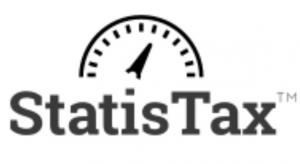The interactive web app allows users to compare per-capita revenue, spending, and debt data for thousands of state and local governments across the U.S.
OAK BROOK, ILLINOIS, UNITED STATES, July 18, 2022 /EINPresswire.com/ -- StatisTax, LLC announced the release of its new Taxpayer Dashboard in keeping with its mission to democratize data. The web app allows users to search, map, and compare per-capita revenue, spending, and debt data for state and local governments throughout the United States.
The U.S. has over 19,000 municipal governments, 16,000 townships, and 3,000 counties, all of which have the power to levy taxes, contract debts, and spend residents’ money.
Until now, it has been virtually impossible for the average citizen to track down all the revenue, spending, and debt data for each layer of government in the communities across the country. Although all such information is public, it is often only accessible through disparate, difficult-to-locate sources. As a result, most abuses of local governments go undetected, leaving the taxpayer unable to make informed decisions about where to live, raise a family, and start a business.
The “Taxpayer Dashboard” changes all of that. By simply typing an address into the Dashboard’s search engine, users can instantly view the revenues, expenditures, and debts for their city, township, county, state, and federal government. The Taxpayer Dashboard reports these data in per-capita terms to control for population variance, delivering uniform metrics with which to compare the fiscal health of communities across the country.
The Taxpayer Dashboard is the first tool of its kind with the power to compare the per-capita taxation, debt, and spending – the best proxy for the size and scope of government – for localities all across America. It empowers citizens to hold elected spenders accountable and equips residents and businesses to make economically efficient decisions about where to invest in real estate.
How does government finance affect real estate values? Property tax liability impacts the value of a parcel most directly because it represents a recurring cost of ownership. While other types of taxation may not be tied to the land in the same sense as the property tax, the geographical location of a home or business renders the owner captive to certain sales, income, payroll, and excise tax rates.
And it’s not just present tax and assessment rates that drive property value; spending-induced debt incurred by a taxing body represents deferred taxation – a future liability that affects the present capital value of the real estate. The Taxpayer Dashboard measures this “spending pressure” to guide both economic investment and political engagement.
Transparency is paramount to the health of a free society and the vitality of a prosperous economy. As an oversight device for citizens to audit their elected spenders and a powerful real estate cost and investment tool, the Taxpayer Dashboard is a key component of the future of public finance.
Visit www.taxpayerdashboard.com to see how the fiscal health of your community stacks up against the rest.
Carl Miller
StatisTax, LLC
info@taxpayerdashboard.com
Visit us on social media:
Facebook
LinkedIn


